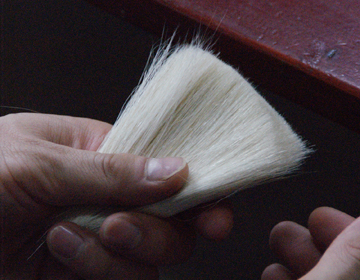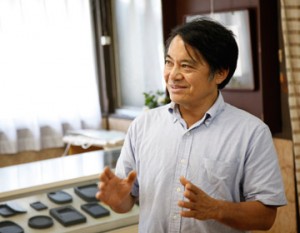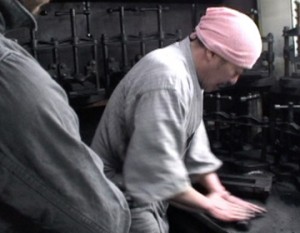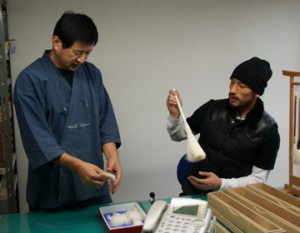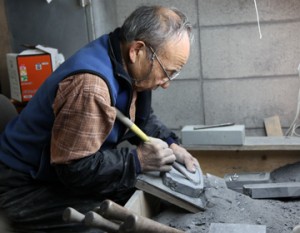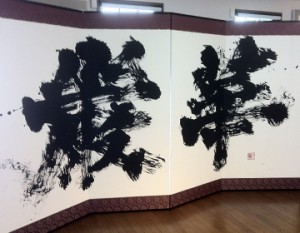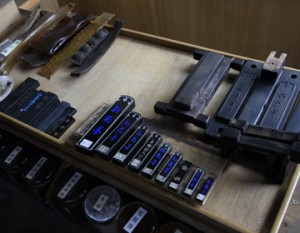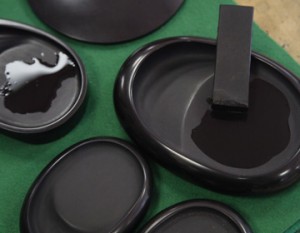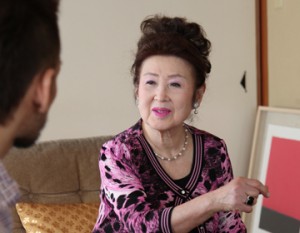Prospered under Temple Schools
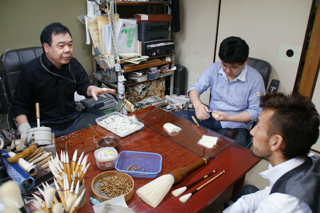
The calligraphy brush or ”fude” was introduced to Japan around the year 600. The Oldest Chronicles of Japan notes ”The processing method for paper and ink was introduced.” It is thought that the ”fude” was introduced at the same time. Later on, cultural development of Buddhism and calligraphy stimulated the pursuit of better brushes.
Masafumi Kamei makes Edo fude, brushes that are known for creating beautiful finishing strokes. It originated in the middle of the Edo period when many temple schools were opened in Edo. This triggered its popularity. Traditional methods have been passed on since then, and Kamei continues the traditional brush making methods.
The brush that creates hope
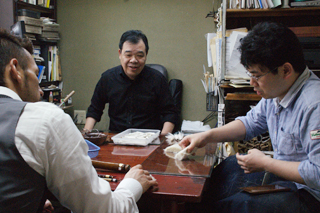
The Edo ”fude” is completed by one artisan. Therefore it possible to create a brush to the exact needs of the client or the person using it. ”In order to create the perfect brush for the calligrapher, we cannot let our own preferences come into play. These days, we ask the calligrapher to take a photo to show us what needs to be adjusted. We can then create a ”fude” that matches the size, texture and other aspects that they want.” Kamei told us.
A prototype of the tip of the brush is made. Then different types of hair are combined to finish off the ”fude”. So they aren’t exaggerating when they say they make more than 1000 types of ”fude”. Hearing this, Nakata commented ”You sound like a ”fude” doctor.” Studying the photograph and asking what needs to be corrected. It’s as if the ”fude” is the prescription. ”Yes, I have a database of tens of thousands. It is up to us as artisans to perfect each one.”
Perfect tools derived from honed skills
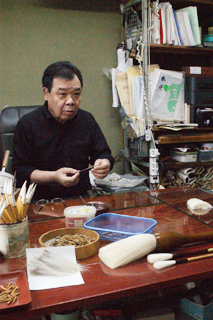
Kamei handed Nakata a ”fude” made of wool. ”Oh, I understand. The excess hair needs to be trimmed. I’ve done this in Hiroshima. I know this is a difficult task…” Nakata commented. ”With Edo fude We don’t use hands, but we use tools.” Kamei told us. This method is called senshutsuzukuri, where the hair is combed with a metal comb to remove unnecessary bristles. Kamei uses a small knife instead of a comb. He gently strokes the bundle of hair and repeats this task, producing the tip of the brush, considered to be the most important part of the ”fude”.
Nakata also gave it a try, placing the tip of the ”fude” on his thigh. ”Take a look at this.” Kamei said pointing to his own thigh. The difference is the way they sit. Kamei’s thigh is flat, parallel to the floor. The brush ends don’t match up otherwise. ”It took me 3 years” he told us. The basic movements affect the final product.
Kamei says that for the artisan, their senses are everything. He also devotes himself to choosing the perfect material, giving minute care to every process. He uses a microscope to make sure the fibers of the brush touch the surface of the inkstone uniformly. His years of experience create the perfect ”fude”. Calligraphers then use the brushes for calligraphy. The artisan’s strong devotion to making Edo ”fude” was conveyed in his comments.



